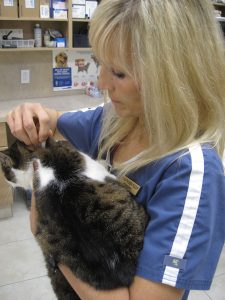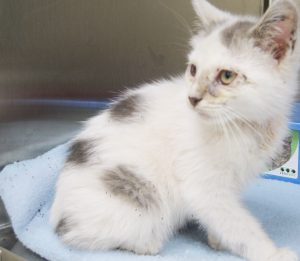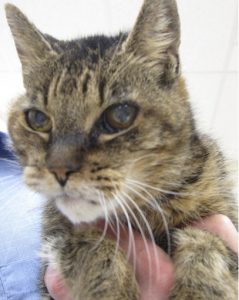Last week’s blog talked about cats and what to feed them, so this week I thought I would talk about how to keep your pets trim. We humans aren’t the only ones battling weight issues – so are our pets. I hope these tips will help your pets stay trim. As with people, always consult with your veterinarian before starting a diet for your pet.
- Count calories – the feeding guides on pet food bags are formulated for adult, intact cats and dogs (not spayed or neutered). Based on this you could be feeding 20-30% too much, especially if you have an older pet. As your veterinarian how many calories you pet should be taking in each day to maintain a healthy weight. A guide is to take your pet’s weight and divide it by 2.2, multiply this by 30 and add 70.
- Measure meals – use a proper measuring cup to properly measure out the amount to fee your pet. Studies show that giving as few as 10 extra kibbles a day can add up to a pound of weight gain per year for indoor cats and small dogs. Once you calculate out how much to feed your pet, divide this amount into 2-3 meals per day. This will help stimulate their metabolism to burn off the calories.
- Treats – if you want to feed treats, make sure they are good treats. Too many treats are full of sugar and fats. Try and find treats that are low calorie and sugar free. Make sure you consider the calories of the treats when calculating out how many calories your pet should be eating per day. As few as 30 extra calories per day can mean an extra 3 or more pounds in a year. Your pet won’t know the difference between getting the whole treat or just part of a treat. So break up the treat into pieces and consider only giving half.
- Vegetables – sliced apples, bananas, carrots, green beans, broccoli and celery can be fed as treats. Stay away from onion and garlic – they are toxic. For cats, try some tuna or salmon.
- Supplements – omega 3 fatty acids, found in fish oils, have been proven to help prevent numerous diseases because of their anti-oxidant effect. They also have anti-inflammatory properties. Almost every pet and people can benefit from taking these. L-carnitine has been shown to help with weight loss and promote lean muscle mass. Again, always consult with your veterinarian before starting supplements.
- Strive for health – 20-30 minutes of brisk walking helps boost immune function in dogs. This also improves cardiovascular health and may reduce some behavioural problems. This is also true for people – well maybe not the behavioural problems. Cats should also be exercised at least 5-15minutes a day. Try a laser pointer or scrunching up paper into a ball, or some remote controlled toy. You could also place a treat (a good treat) up your staircase so that your cat has to work to get its reward.
- Watch those carbs – as last week’s blog stated, our domesticated cats need protein from meats in order to obtain essential nutrients. So based on this, we like to see our cats eating canned food because they are high in protein. A high protein, low carbohydrate diet helps prevent obesity and since obesity can predispose cats to Diabetes Mellitus, we are also lessening the chance of diabetes. Look for a low or no-grain option with a protein source as the first ingredient.
Remember to keep track of our clinic cat Amber’s weight loss on facebook.
I hope this helps. All the best, Dr. Fulop.
Veterinarian Blog 2012
Amberlea Animal Hospital serving Durham, Pickering, Ajax, and Whitby, Scarborough, and the GTA
source article: http://abcnews.go.com/blogs/lifestyle/2012/01/seven-secrets-to-keep-your-pet-trim/













Recent Comments